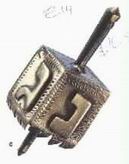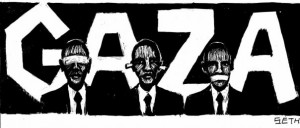What Gaza teaches us of networked solidarity
The web is celebrated as this new radical space that re-challenges our old definitions of identity and solidarity, beyond prejudice, beyond borders, beyond nationality. However, the war in Gaza and the mediation around it tells a slightly different story. I would like to focus a couple of blog posts on the use of user generated content in the context of this war as a brutal reality check of our use of new media.
The Blogosphere and News Media
The body count of the first day of the war made it obvious this is a whole new ball-game. As the air strikes hit the streets of Gaza, the media started reporting through the clouds of smoke and military censorship, and the blogosphere rumbled with horrific reports of death and destruction from the city under siege. On the first day of the operation and ever since, my friend Laila El-Haddad, started posting about The rains of death in Gaza, channeling her parents’ horrific experiences from the first day of a war. A war they can still not imagine will get worse and worse every day. The blogs in Israel are divided between covering the terror of life in Sderot and the rest of the Israeli south under the Hamas rocket fire, and the excited coverage of the “glorious” operation titled ‘Cast Lead’ – quoting a Hanuka song where a child sings about playing with a Dreidel of cast lead – a holiday present from an uncle.

Unlike the Lebanon war of 2006, arguably the most mediated war in history, in this war information is heavily proxied by all media players. The army prevents any coverage from within Gaza “to not jeopardize the objectives of the operation”. As a result we are left with heavily recycled information. Glimpse of media scattered from some eye witnesses in Gaza, reporting as they are running for cover. Other bits of data are coming from reporters attempting to decipher the weapons being used from the shape of explosions and smoke clouds. The rest is coming from Israeli officials. Laila’s dad is calling her to get updates about Gaza as they are hiding in their homes trying to make sense of the bigger picture. No one knows, the army calls civilians warning them that it is not safe to stay in their houses but it is not clear where is safe.
The image received is one of huge confusion, many little sources report on mayhem and destruction. Sometime a note about a specific neighborhood or a certain landmark being hit. But overall, through out the whole operation there is no “bigger picture”, no objective report, no clue of what this operation aims to achieve or when will it end. Laila and her blog becomes a media phenomenon of the war, constantly interviewing to major news channels with her father, Moussa El-Haddad. Shivering, terrified and covered with dust, Moussa becomes an A-level information source to the horrors on the streets of Gaza.
Blogging is often criticized as a parasitic medium – it leeches off of the journalistic reports of the news media and depends on it as a source. In the affairs of this war information is scattered, there is no comprehensive context to blog about and refer to. The parasite/host media paradigm flips as the news media depends on the limited voices and personal accounts sipping through the blogs to balance the orchestrated diplomatic efforts of the Israeli government spokespeople. Different statistics are cited, but drowned in subjectivity and horror, neither the blogosphere nor the news media can provide the much needed context for discussing and critiquing this controversial operation. Another factor which postpones action on the part of the international community and provides politicians the opportunity to release uncommitted statements.

2 thoughts on “Gaza and the media parasite/host reversal”
Comments are closed.